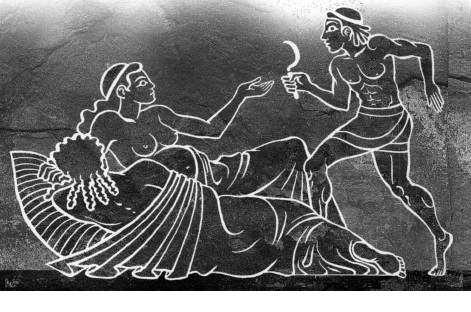Cyclopes (1) (Singular: Cyclops; Round-eyed) Greek Three sons of Uranus and Gaia, large and strong, each with one eye in the middle of his forehead; siblings of the Hecatoncheires, hundredhanded giants, and the younger Titans.
Publié le 26/01/2014

Extrait du document


«
These Cyclopes served King Proetus of the
city Tiryns.
For him, they built the great walls of
the city.
They built similar walls around the city
of Mycenae and the famous Lion Gate there.
The
stones they used were so massive that the term
“cyclopean” has come to mean gigantic.
They were
also called “belly-hands” for they worked for their
livings..
»
↓↓↓ APERÇU DU DOCUMENT ↓↓↓
Liens utiles
- Hyperion (The One Above) Greek One of the Titans; son of Uranus and Gaia; father with Theia of Helios, Selene, and Eos (the Sun, the Moon, and Dawn).
- Prometheus (Forethought) Greek One of the Titans, descended from the Earth Mother (Gaia) and the Sky Father (Uranus); son of Iapetus and one of the daughters of Oceanus, possibly Clymene; brother of Atlas and Epimetheus; father of Deucalion.
- Hecatoncheires (Hecato nchires) Greek The hundred-handed giants, offspring of Gaia and Uranus.
- Mnemosyne (Memory) Greek A Titan, daughter of Gaia and Uranus; with Zeus, mother of the Muses.
- Phoebe (Bright) Greek A Titan, one of the daughters of Uranus and Gaia.


